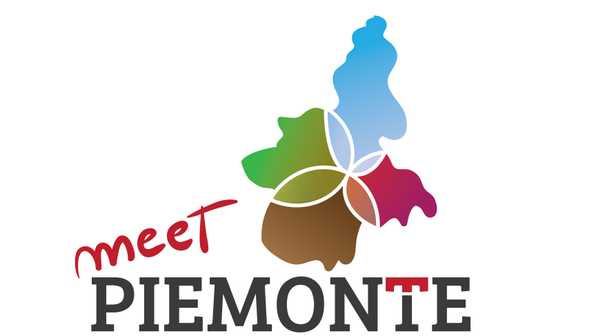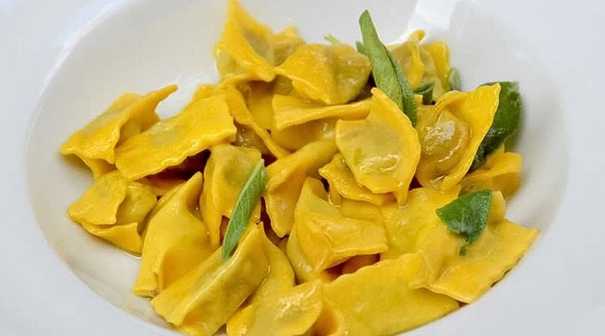5 Questions with Marco Scaglione of Meet Piemonte
region. He has over ten years experience as a Tour Manager leading luxury tours all over Italy for US based travel companies. Piemonte, home of Slow Food movement, white truffles and aged red wines, is all about artisanal organic food, ancient recipes influenced by our century-long history and by the unique geographical position. Marco invites everyone to visit Piemonte because, unlike Tuscany or other touristy Italian regions, here you can still savor what authentic Italy is all about.
1. What foods is your city known for?
Over centuries, farmers have learnt how to preserve food avoiding the waste. At the same time, traditional recipes and local products were cooked for the nobles and wealthy people of Piemonte, who were strictly connected to the French culture: the heritage we got, is a cuisine much more sophisticated than in any other Italian region. Breadsticks, crunchy and salty, were invented in the 1700s and are freshly made in bakeries all over Piemonte. Our capital, Turin is chocolate heaven: here was invented the "gianduia" flavor, a mix of chocolate and hazelnuts and the famous "bicerin" a glass where hot chocolate, espresso coffee and whipped cream are layered one on top of the other. Several kinds of hazelnuts pastries, pralines and homemade versions of Nutella are typical delicacies of our pastry shops. Alba is famous for the white truffle and a large array of products made out of black truffles (cream-spread, cheese, olive oil...). Cheese has been produced for centuries from goat, sheep and cow milk, often combined together: the selection is huge, from the "Castelmagno" aged in natural caves over the Alps, to the "Roccaverano" goat cheese, more or less creamy depending of the ripening and produced in a very limited area over the Langhe hills, South of Asti. Depending on the season, we can taste different kinds of fruits and pickles, including specific olives coming from the near Liguria region. The vicinity to the Mediterranean helped in the past the traffic of dry anchovies preserved under salt, which are still used in many traditional recipes, like the tuna sauce that goes with a boiled sliced veal (that's an antipasto), or anchovies mixed with garlic and olive oil making a sauce topping oven-roasted peppers and other vegetables. Last, our pasta is made with eggs, giving a completely different taste and consistency than regular pasta. Our top types of pasta are the "tajarin", a sort of angel hair cut by the knife and the tiny filled ravioli called "plin, pinched by hand one by one.

2. What is the best time of year to visit your Piemonte?
Our high season corresponds to the period of the Truffle Fair in Alba, from October to mid-November. Said that, high season means crowds (at least in Alba), higher prices and less chance to experience the slow pace that makes Piemonte unique. Except January and February, when most hotels and restaurants are on vacation, any other time is great to visit. Piemonte is spectacular with the blue and sunny summer weather even if white truffle is not in season. And it is even more fascinating with the foggy weather because that's what make it different. March and April are two of my favorite months, just because is not crowded and the nature is awakening after winter.
3. Are there any events foodies should plan their trip to Piemonte?
As said, Alba's Truffle Fair is the "big" event but certainly not the only one. Beginning of March in Monastero Bormida takes place the "polentone" an historical event where a huge polenta is cooked in the main piazza, served with sausages. That's were locals go and there is a big market all day long. In Turin every two years Slow Food opens "Salone del Gusto" where gourmet products from all over Italy and from the entire world are displayed. Cooking shows, classes, conferences are held at the same time. Alternated to Salone del Gusto, in Bra there is "Cheese" in September, another Slow Food movement big event. The number of produce markets available in any little town is endless and those are available all year round. Alba for instance every Saturday morning hosts two markets: on the side of the traditional food market there is the one of the local smaller producers selling their own jars and salami. Nizza Monferrato, South of Asti has one of the most charming vegetable, fruits and cheese market, every Friday morning while Asti everyday has a covered market. Last, Turin host the largest food market of Europe, called Porta Palazzo, with food coming from Southern Italy, Northern Africa, middle East. In fall there are several events and fairs focused on specific products where anyone can go for free and sample or eat an entire meal fro cheap: Cortemilia and hazelnuts or Cuneo and chestnuts, just to mention two of them.
4. Who are some of the chefs in Piemonte that we should keep an eye on?
Alba has one of the few three-star Michelin restaurant of Italy, called Piazza Duomo. The chef is Enrico Crippa. Piemonte is big in terms of Michelin starred restaurants spread all over the region: among them I like to mention "La Ciau del Tornavento" near Alba and "Locanda del Pilone". Other places not starred but offering fine-dining are "Da Felicin" in Monforte, "Il Centro" a Priocca e so many other! Said that, our traditional "trattorias" are what made our cuisine famous: it's still common to go in those family-run places where the cooker is the "mamma" of the family, eating an entire five course meal with 25 to 30 EUR per person. The best suggestion is to alternate both experiences: one night you go for a fancy dinner, the following night you drive over the hills and sit in a trattoria where, traditionally, they might not even have the menu displayed: they just start bringing one course after the other, typically 4 to 5 antipasti, two pasta courses, two secondi (main) and 3 or 4 samples of desserts. Buon appetito!
5. What can people expect on Piemonte food tours?
Each food tour is different from the other because we focus on season and on what's available and fresh that specific day. We called this experiences "foodie walking tour" because yes the food is predominant but not the only aspect of the tour. In Piemonte it would be impossible to talk about food without talking about our history and our geographical position: that's where the roots of our recipes and products stand so by the end of our food tour you actually get a complete overview about Piemonte. It's not just eating! We like to combine the most iconic historical sites of the place we visit with food tastings at the local market (when available), food stalls and shops. We like to include smaller tastings of several items rather than an entire portion of one recipe only. This way, yes you can get the equivalent of a light meal but you still have room to try on your own in a restaurant some recipes (like main courses) that would be impossible to be served during a walking tour.


